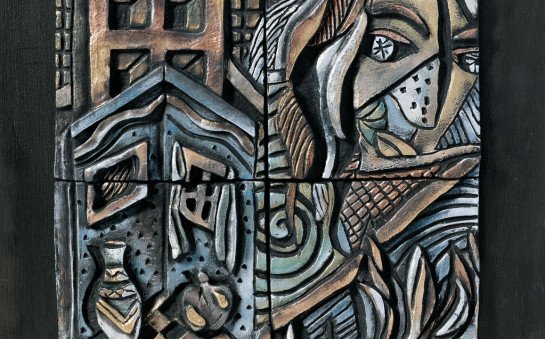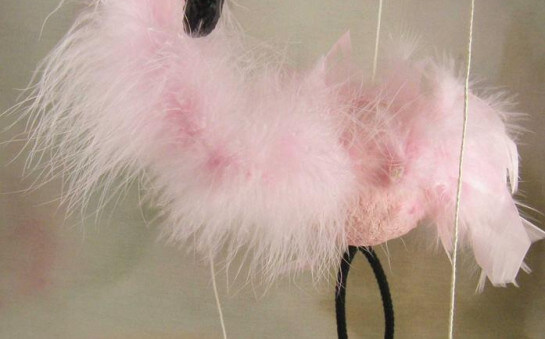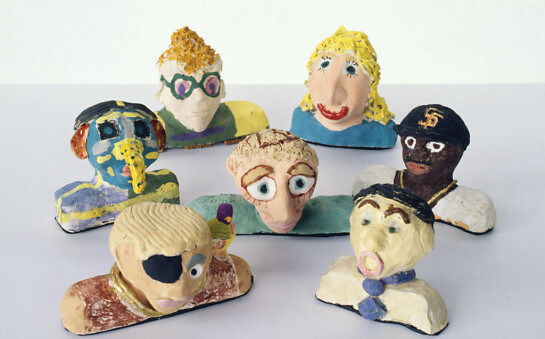Monoprint in Clay
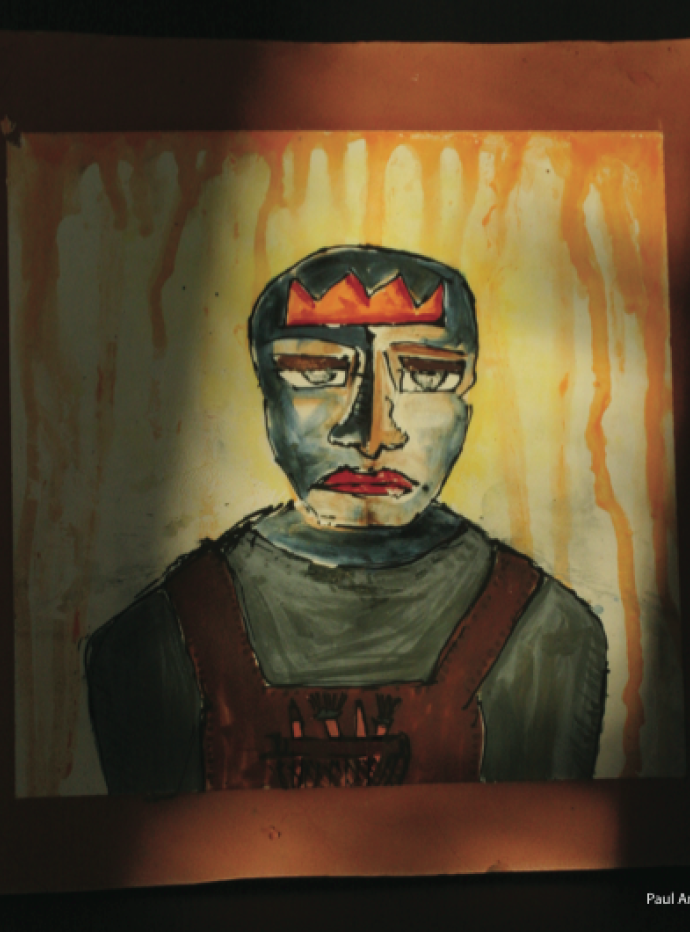
A plaster slab can be used as a canvas to make an image using AMACO® Velvet Underglazes, AMACO® Liquid Underglazes, AMACO® Gloss Decorating Colors and the AMACO® Semi-Moist Underglaze (watercolor) trays.
The advantage of drawing and painting with ceramics on a plaster slab is having the luxury of time when working on an image. The underglazes and slips get absorbed and are held in the plaster until you’re ready to pour the casting slip over it.
The image created on the plaster slab is transferred to clay using the monoprint process, which is a printmaking technique. This method of creating an image requires working from foreground to background when making your images, because the information is reversed during the transfer (printing) process. This means when you’re overlapping colors, the first ones applied are the foreground, then layers over the top of these initial colors develop into the background. The colors can also be applied side-by-side, without overlapping, so the image you see is what you get when reversed.
Supplies List
- Balsa Foam
- BALSA FOAM & VELVETS Printing Kit
- Liquid Underglazes
- Any Clay
- Sedona Red Casting Slip No. 67
- Underglaze Applicator
- Glaze Brushes
- Plaster Slab
- Tape
- Sponges
- Velvet Underglazes
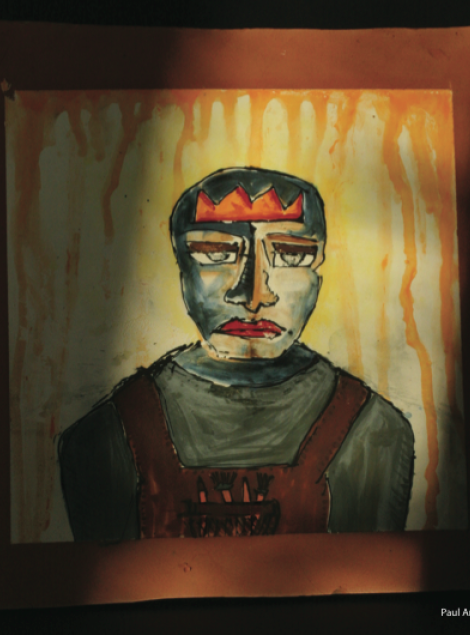
Background of face
Apply face background.
Create Background
After the front image is complete, create the backdrop behind the figure and around head.
Preparation
Mask out the print area on the plaster slab with tape.
Sketch
Sketch the outlines of your design, keeping in mind that the image and any text will be reversed in the transfer process. The first few prints won’t look exactly the way you expect until this way of drawing becomes more comfortable for you.
Outline with Underglaze
Use AMACO® Underglazes in squeeze applicator to create permanent outlines. You can use water to erase or soften your outlines. Unwanted pencil lines can be erased with a damp sponge. They will also burn out during firing if not erased.
Work foreground first
Use AMACO® Semi-Moist Underglazes to shade as you would with watercolors. Because you’re working in reverse process here, these shadings will be the blush of skin tones on the image’s surface when transferred.
Add background color last
Apply the background colors for the figure.
Background colors complete
Flowing color in background
Moisten and let the color run to create the flowing backdrop.
Finishing background
Adding and darkening the flow of underglazes; adding more complexity to the flowing background.
Remove tape
Clean up borders
Reapply tape
Place fresh tape borders for slip application.
Apply underglaze
Apply White Underglaze to the background behind figure and flowing halo. The layering behind the portrait figure helps to create an illusion of dimensionality.
Remove tape
Now the image is complete and you can remove the tape borders.
Cut Clay "Dams"
Once the image is complete and is dry to the touch, create a clay dam that works as a mold box for the casting slip to be poured and firmed up to create the clay print. To make this clay dam, roll out a clay slab approximately 3/8 of an inch thick and cut into 1″ strips.
Apply Slip to Dams
Apply slip to the adhering edge by brush casting slip (same as you’re going to use to pour the image) onto the edge of the clay strip.
Build Dam
Make the wall around the slab by attaching it to the surface of the plaster slab around the image.
Finished Dam
Pour casting slip
Pour casting slip over the image to desired thickness. Start at one end and work your way over to the other side. If the casting slip is thin, it will level out on its own. If the casting slip is a little thick, you’ll need to level it out with a spreader.
Allow to set
Allow the casting slip to harden for about 15 minutes. When firm to the touch, cut off the clay walls, check to see if it is strong enough to remove.
Remove from plaster
Place a piece of plastic cling wrap on back of clay print and then a piece of cardboard. Carefully flip it over and remove the plaster bat. The clay print can continue to dry on the piece of cardboard. Drywall or a wooden board work just fine as well.
Dry and Fire
Allow to dry and fire as recommended for casting slip.

